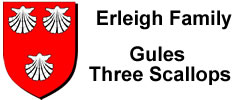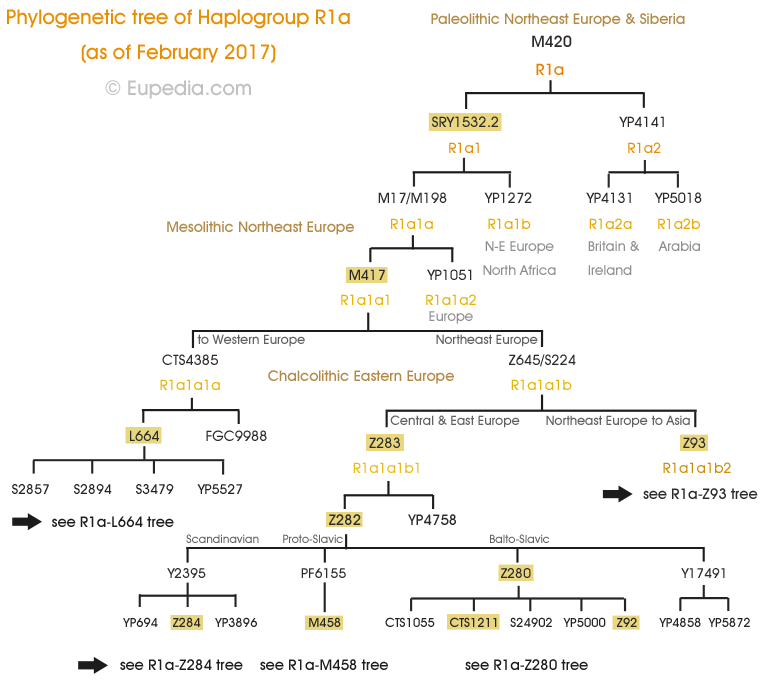Y-DNA Haplogroup of Edward Earle of Secaucus is R1a1a1a1d2b3a3 (YP5190)
Some known Earle Surname descendants of Edward Earle of Secaucus New Jersey have had their y-DNA tested with FamilyTreeDNA. The results showed they belong to the Haplogroup R1a, and specifically the L664>YP282 subclade. The L664>YP282 subclade shows that these individuals belong to the North-Western European R1a Branch.
The sequence of “subclades” or branches shows the migration and timing of the movement of people.
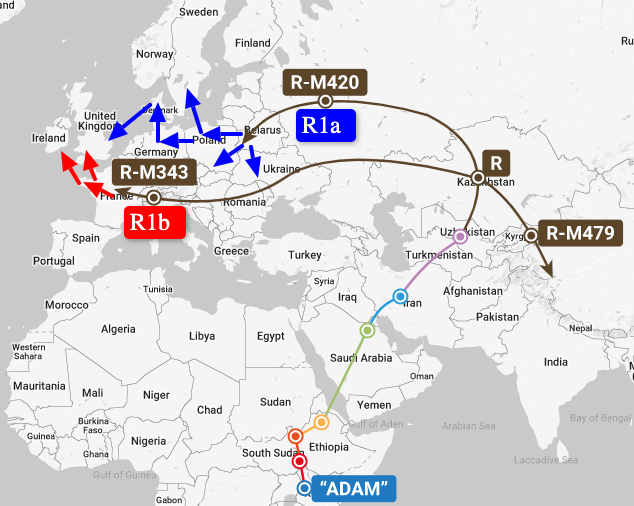
The haplogroup R1a is an extraordinarily widespread haplogroup, stretching from Britain in the west to China in the east and from the Volga and the Don river valleys in Russia and Ukraine (where it apparently originated before the LGM) through Iran and Northern India to Arabia.
The main R1a group is the primary haplogroup of the Slavic peoples of Eastern Europe, it spread with the Corded Ware culture, which centered in the southern Baltic region north of the Black Sea.
The North-Western European Branch R1a-L664>YP1014
Where the Subclad >YP1014 Originated
R1a-M420 >M198 >M417 >CTS4385 >L664 >Y2894 >YP287 >YP285 >YP282-C >YP441 >YP1014

R1a Subclade >L664 (DYS388=10) From Southern Russia Migrated South
Around 2500-2000 BC, subclade R1a-L664 split from the main R1a haplogroup (M417) and migrated south from the Russian Steepe area (steppe is the Russian word for grasslands) and were living mostly in what is modern-day Romania, Hungary, and Southern Germany and may have belonged to the “Corded Ware Culture” expansion, and possibly the “Yamana” Culture.
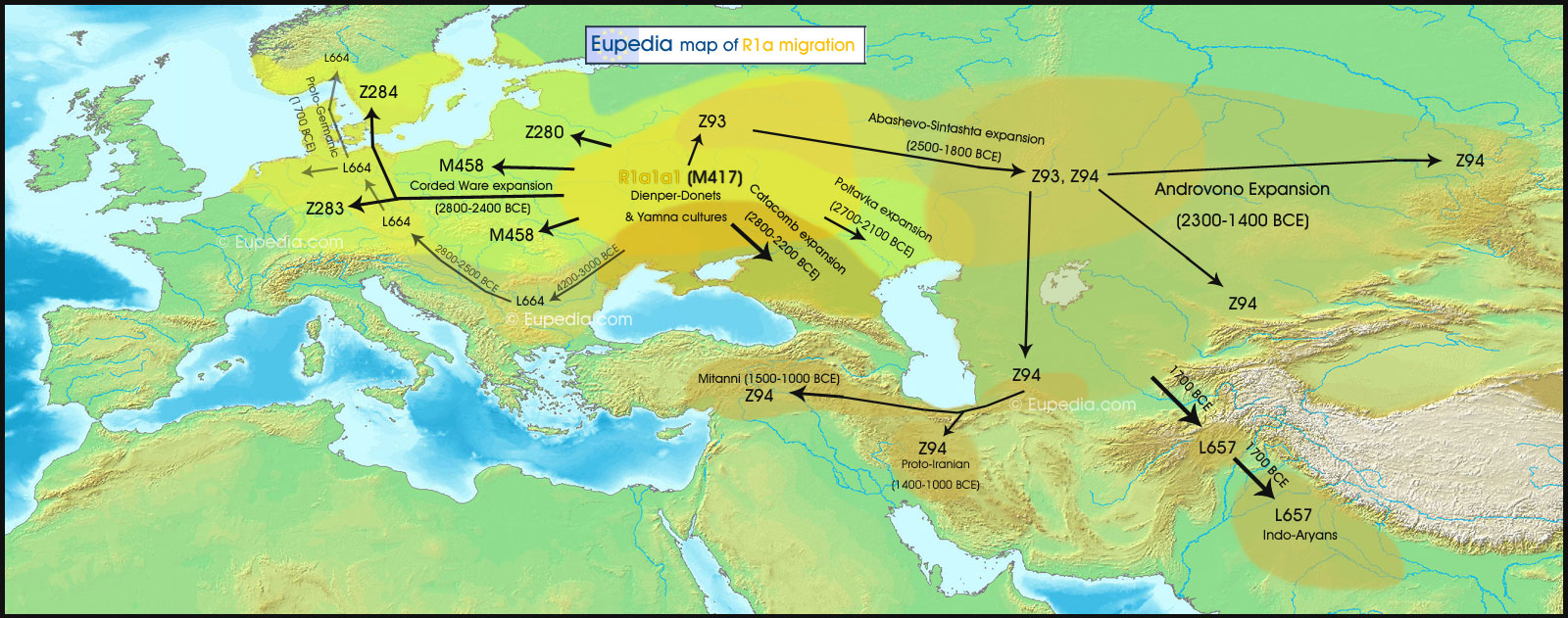
R1a Subclade L664>S2894 >YP285 >YP282-C – Arrival in Southern Scandinavia
Around 1800 BC some members of this branch migrated north into southern Scandinavia where the subclade then splits into 2 branches (see chart above).
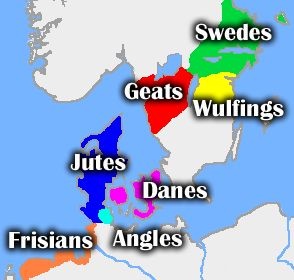
While living in Scandinavia these groups were not “Scandinavian” per se but were considered proto-Germanic people groups at that time. Later they would be known as Germanic tribes.
They settled in the Scandanavian area for over two thousand years as their homeland while also migrating and expanding into modern-day Germany, the Netherlands, and Holland. The “Germanic tribes” originated in a homeland in southern Scandinavia (Sweden and Norway, with the Jutland area of northern Denmark, along with a very narrow strip of the Baltic coastline). Some of these tribes became known as the “Geats” which may have been an offshoot of the Jutes. The Geats derived their tribal name from a mythological ancestor by the name of Woden.
R1a Subclade YP1014- Arrival in Britain (Roman Era)
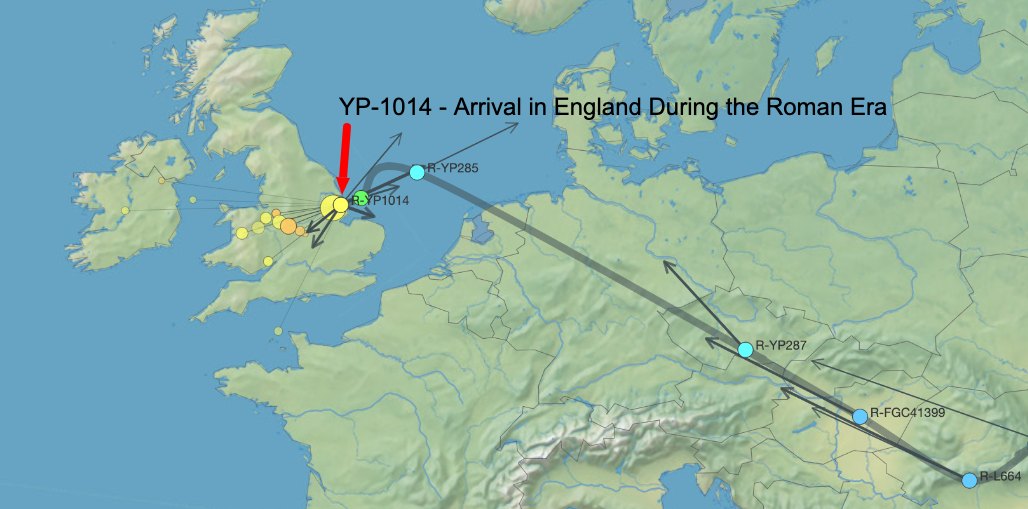
Around 200-300 AD some members of subclade >YP1014 (possibly Geats) left Scandinavia and ended up in the British Isles. They came to Britain with the Roman army as mercenary soldiers, whether they were volunteers or conscripted as a conquered people is not known. Most of the subsequent members of this subclade (YP-1014) have their origin in the British Isles.
In this time period, around 250AD, there is recorded evidence that Germanic people came to Britain with the Romans to fight as mercenaries. Some of these mercenaries may have been Jutes. Germanic migration into Roman Britannia may also have begun much earlier. There is also recorded evidence, for example, of Germanic auxiliaries, called “irregular troops” that were supporting the legions in Britain as early as the 1st and 2nd centuries.
There is a proposed link between the Geats and the Jutes regarding British migration, the so-called “Jutish Hypothesis”. The Jutish hypothesis claims that the Jutes may be synonymous with the Geats of southern Sweden or their neighbors, the Gutes. They were called Jutes because they originated from, what is now, the Jutland Peninsula and part of the North Frisian coast, consisting of the mainland of Denmark, Southern Schleswig (Germany), and North Frisia (Germany).
There is also evidence that some of the YP-1014 subclade group that came to England were a tribe called the Heruli (or Herules). See the story of the Heruli Tribe
Some of the Heruli tribe were part of the Batavi (military unit). The Batavi in sources are usually recorded together with the Heruli, and it is probable the two units fought together. The Roman historian Ammianus mentions the Heruli and the Batavi together as brother people. Later inscriptions in Scandinavia which are sometimes attributed to Heruli suggest that this fierce, martial people were called the ‘lords’ (“erilaz” singular, later “eorlas” or “lords” to the Angles and Saxons who migrated to Britain, and “erlos” or “men” to the Old Saxons). There are numerous altars and tombstones of the military units of the Batavi, dating to the second century and third century, that have been found along Hadrian’s Wall, notably at Castlecary and Carrawburgh. The Heruli people may have been guarding on Hadrian’s Wall with the Batavi military units as well.
Slowly over time, the Roman rule came to an end in Britain and there was a transition from Roman Britain to post-Roman Britain. In 383, the Roman usurper Magnus Maximus withdrew troops from northern and western Britain, probably leaving local warlords in charge. This begins a period that is called the Germanic “Migration Period” (roughly 300AD to 700AD) and precedes the Viking Period (roughly 793AD to 1066AD).
The Migration Period which is also called the Barbarian Invasions or German: “Völkerwanderung” (wandering of the peoples), was a period of Germanic migration marking the transition from Late Antiquity to the Early Middle Ages. The Migration Period was widespread migration of and invasions by peoples, notably the Germanic tribes in Britain, the Huns, the early Slavs, and the Pannonian Avars within or into other territories of the Roman Empire.
In 405AD the Roman garrison was ultimately completely removed from Britain to Gaul, leaving the island a victim to ongoing barbarian attacks and open to the ongoing Germanic Migration of Jutes, Saxons, and Angles.
By the 7th century the broad term “Jutes”, was used by the English chroniclers, as one of the three Germanic tribal groups by which settled in England, namely the Jutes, Saxons, and the Angles. The historian, Bede, calls them Jutes, so that we may conclude that at the end of the seventh century this was the name by which these people were known in England. In early records relating to Germany and the North, they appear to have been called by many names such as Vitungi or Juthungi, Jutæ, Gætas, Gothi, Gothini, Gythones, Guthones, Gutæ, Gautæ, Vitæ, and Gæta.
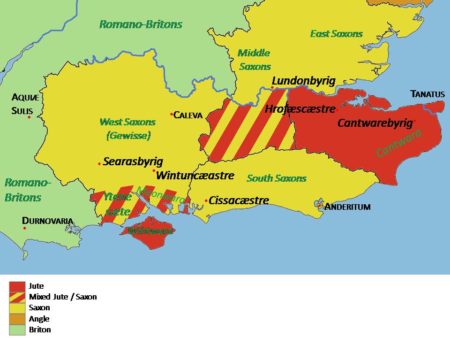 The ‘Historia Brittonum,’ later gives one main name to all the invaders of Britain, that of Saxons, and does not attempt to distinguish them under the national or tribal names by which they were known among themselves. It was sufficient for his purpose as a British historian to describe these enemies of his countrymen by one general name.
The ‘Historia Brittonum,’ later gives one main name to all the invaders of Britain, that of Saxons, and does not attempt to distinguish them under the national or tribal names by which they were known among themselves. It was sufficient for his purpose as a British historian to describe these enemies of his countrymen by one general name.
R1a Subclade >YP1014>YP5190>YP5686>
By 575 the “Saxons” as they were now known were the dominant people group of southern Britain.
The subclade YP1014 ended up in West Saxon territory where they settled and lived for hundreds of years before they became known as the de Erleigh family.
